About This Recipe
I have had sambar in many places and I also make many variants of sambar. But I like this Kerala sambar which my mom makes and this Varutharacha Sambar which is a different and unique recipe from this Kerala Sambar. I love the food from Kerala – from the Appam to the Avial, from the Puttu to the Kadala Curry. I have been lucky enough to have a feast of the Kerala cuisine many times, especially on the festival of Onam and Vishu. Thanks to my mother who is a great cook and my father who is born and brought up in Kerala. I remember my office days, when I would come from work and ask mom about the dinner. When she would mention that she had made sambar, I would feel so good. Those days, I would take more amount of rice than I usually took. I only need to have sambar with rice and Kerala pappadums. It is one comfort food for me that I have always relished and cherished.. It would be very selfish of me if I did not share this recipe of Kerala sambar with the readers of my blog. I hope you enjoy making this sambar and relishing it too. This Kerala style sambar, makes use of mixed vegetables. You could use any vegetables that are usually added in a sambar – like pumpkin (yellow or white), okra, carrots, drumsticks, radish, onions/shallots, tomatoes brinjals, snake gourd, mangalore cucumber, yam (suran), bottle gourd, plantain (unripe bananas), ivy gourd. I have used pearl onions, tomatoes aubergines and okra. Since I was also making Beans Thoran and Potato Fry, I did not add beans nor potatoes to the sambar. This recipe also calls for roasting the spices, coconut and then grinding it to make the sambar masala. Trust me, just making the fresh sambar masala is better than using ready-made sambar powder. I also use ready-made sambar powder, when I have to make a quick sambar dish. But in my experience, the sambar made with fresh, roasted ground spices taste very different than the one made with ready-made sambar powder. If you have to use readymade sambar powder, then make your own homemade Sambar Powder. It is much better than using the store-bought ones.
How to make Kerala Sambar
Make Kerala Sambar Masala
- Measure and keep all the ingredients ready for making sambar masala.
- On a skillet, tava or a shallow frying pan, heat up 1 to 1.5 tablespoons of coconut oil. Add 3 to 4 pearl onions (sambar onions) that have been sliced or chopped.
- Fry till they become translucent and are softened. Do not brown them.
- Keep the heat to a low. Then add 1 tablespoon cumin seeds and ¼ teaspoon fenugreek seeds.
- Next add 12 to 15 curry leaves and 2 tablespoons coriander seeds.
- Also add 3 to 4 dry Kashmiri red chilies (seeds removed) and ¼ teaspoon asafoetida (hing).
- Fry on a low heat stirring often till the spices are light brown.
- Now add about 1 cup of grated fresh coconut.
- First mix and then roast it with the rest of the spices till the coconut is golden and you get a fragrant aroma in your kitchen. Let this mixture cool. Remember to stir often so that the coconut is evenly roasted and browned.
- Once, cooled, add this roasted spices and coconut mixture into a grinder or blender.
- Add ½ cup water or as needed.
- Blend or grind to a smooth and fine consistency.
- This is how the sambar masala paste will look like.
Cook Dal
- Rinse ½ cup of tuvar dal (arhar dal, tur dal or pigeon pea lentils) 3 to 4 times in water.
- Take the rinsed tur dal in a 3 litre pressure cooker. Add 1 small-sized chopped onion (about ¼ cup chopped) and 1 to 2 pinches of asafoetida (hing).
- Add 1.5 to 2 cups water. Mix well. Pressure cook on medium heat for 4 to 5 whistles or till the lentils are tender, softened and thoroughly cooked. When the dal is cooking, make the tamarind pulp. To make tamarind pulp, soak 1 lime-sized tamarind (about 1 tablespoon tightly packed tamarind) in ¼ cup hot water for 20 to 30 minutes. When warm or cooled, squeeze the soaked tamarind with your fingers and add it to the soaked water. Then use the tamarind pulp in the sambar as mentioned in the steps below.
- When the pressure falls naturally in the cooker, then only open the lid. Check to see if the dal is softened really well. It should have a mushy consistency.
- Mash the cooked dal slightly with a spoon when done.
- Add 10 to 12 pearl onions (sambar onions), 5 to 7 chopped brinjals and 1 large-sized chopped tomato. Add all the vegetables except for the okra to the cooked tur dal.
- Add water as required to get a medium to medium-thin consistency.
- Next add ½ teaspoon turmeric powder.
- Give a nice stir to the entire mixture.
- Cook the dal with the vegetables until they are half-cooked. This takes about 11 to 12 minutes. Stir at intervals so that the lentils do not get stuck to the pan. If you like you can cook the vegetables separately in water and then combine with the mashed dal or steam the vegetables separately in a steamer-pan or pressure cooker.
- Now add 8 to 10 okra that have been chopped and ¼ cup tamarind pulp.
- Add the ground masala paste.
- Mix and stir well. add some more water if the sambar has become thick.
- Add salt as required.
- Give the sambar a boil once and then simmer till the veggies are tender and cooked.
- This will approximately take about 15 to 16 minutes. Turn off the heat when all the ingredients in the sambar have nicely infused with one another and you have a lovely sambar aroma pervading all around in your kitchen.
- Keep the sambar closed with a lid and move on to the next step of tempering the sambar.
- Measure and keep all the ingredients ready for the tempering/tadka.
- In a pan or the tadka utensil, heat 2 tablespoons coconut oil. Add 1 teaspoon mustard seeds and let them pop or crackle. Keep heat to low or medium-low.
- Then add 1 teaspoon urad dal, 2 to 3 dry red chilies and 1 sprig curry leaves (about 12 to 15 curry leaves). Fry the red chilies till they change color. Take care that the red chilies do not get burnt.
- Once the tadka is ready, directly pour the hot tadka on the hot sambar.
- Immediately, cover the Kerala sambar with a lid and let it stay closed for around 8 to 10 minutes. We do this at home so that the flavors and aroma of the tadka get very well infused with the sambar or dal.
- Later mix well.
- Serve the Kerala sambar with steamed rice and pappadums, accompanied by a side vegetable dish and a bowl of yogurt or raita. Enjoy 🙂 If there is any leftover sambar, you could have it the next day with dosa, idli, medu vada or dal vada. But keep the leftover sambar in the fridge.
Expert Tips
Do not directly add the aubergines (brinjal) in sambar. Chop them and keep them in salted water for 10 to 15 mins so that the bitter juices are extracted from them in the salted water.The souring agent we use in sambar is generally tamarind. If your tamarind is too sour, then you will have to increase the chillies and salt with it and vice versa. The tamarind, chillies and salt have to balance each other. I came across this tip in Chandra Padmanabhan’s cook book – “Southern Spice: Delicious Vegetarian Recipes from South India“. It is a nice book if you are looking for a variety of vegetarian recipes amongst the South Indian cuisine. Fortunately, whenever I have made sambar, the tamarind has never been too tart and the sambar has never become too sour.If you do not have fresh coconut, you could substitute it with desiccated coconut.If you are using a lot of mixed vegetables, alter their amount (that is do not use the quantity of vegetables mentioned in this post) so that there is a balance of the vegetables and dal in the sambar.
More Sambar Varieties
Idli sambarThakkali sambarVegetable sambarDrumstick sambar
Please be sure to rate the recipe in the recipe card or leave a comment below if you have made it. For more vegetarian inspirations, Sign Up for my emails or follow me on Instagram, Youtube, Facebook, Pinterest or Twitter. This Kerala Sambar recipe post from the archives first published in September 2010 has been republished and updated on 26 June 2022.
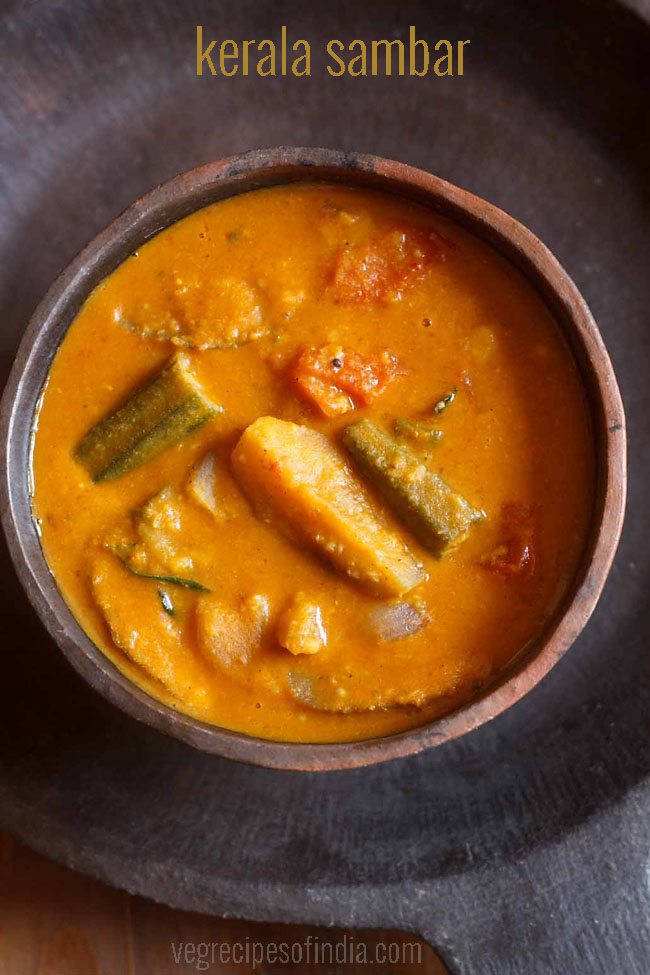
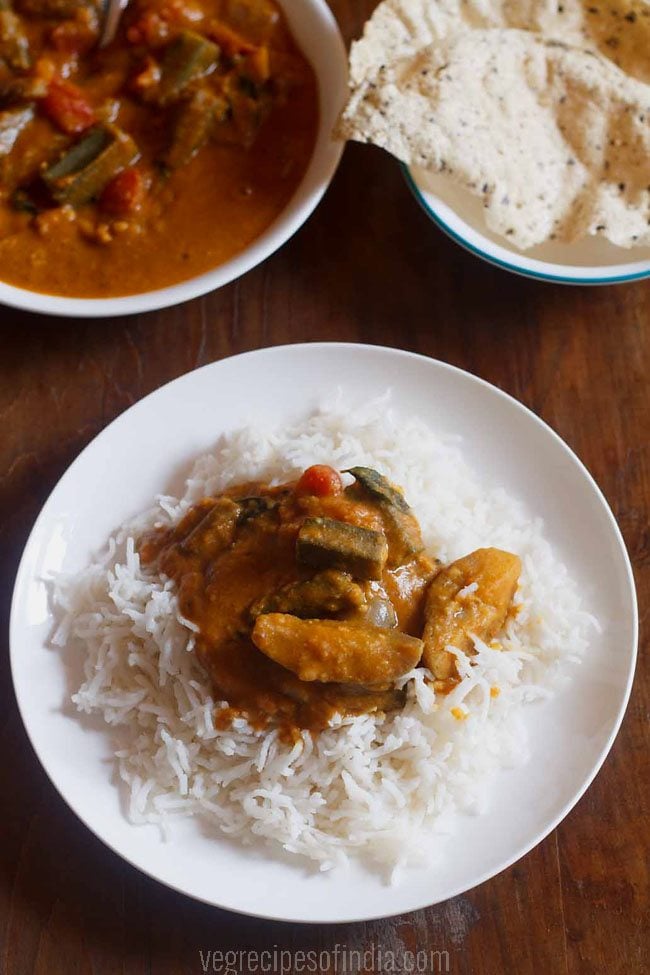
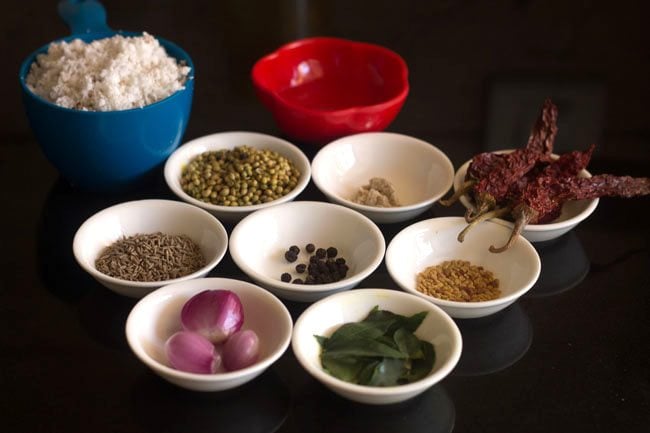
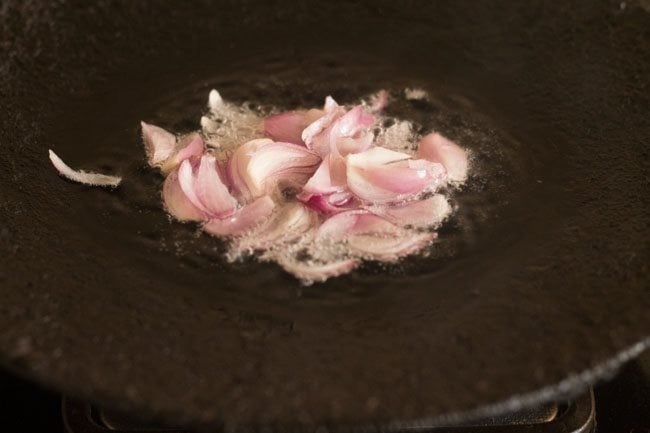
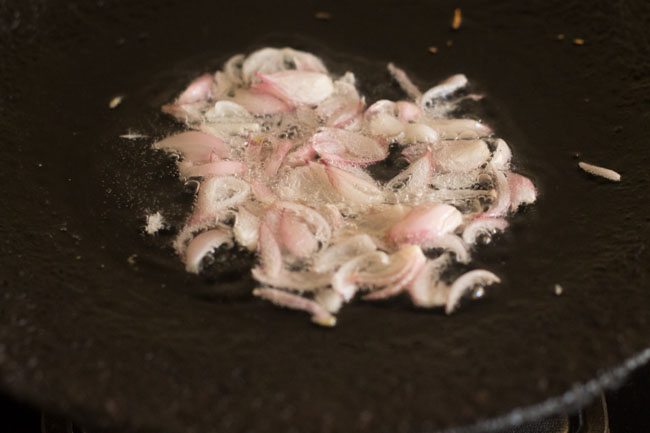
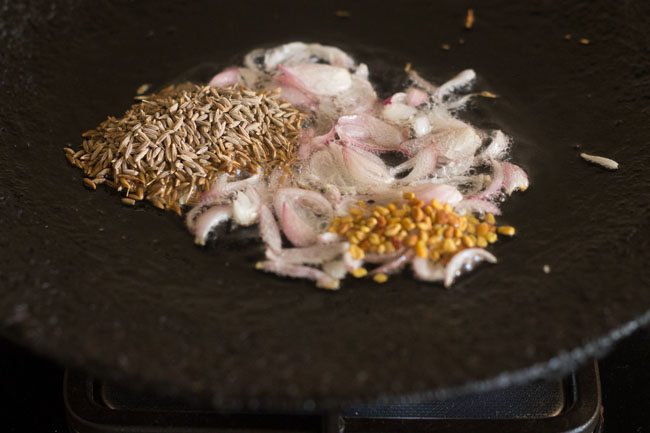
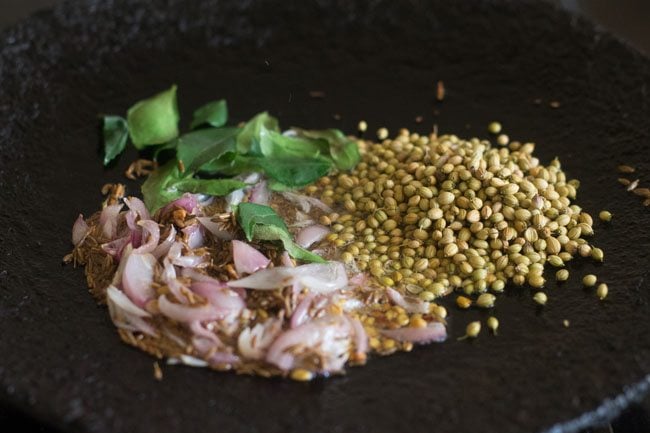
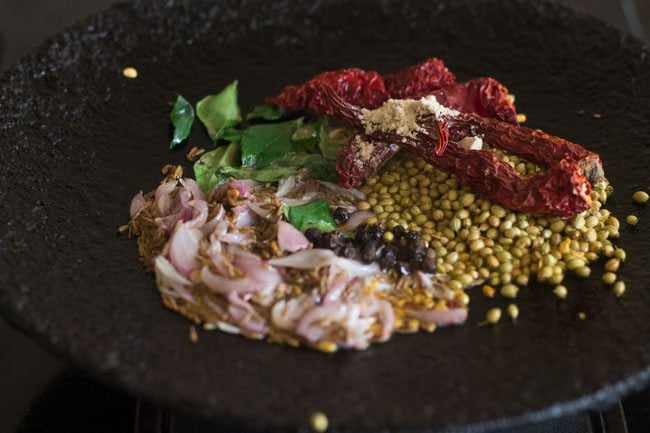
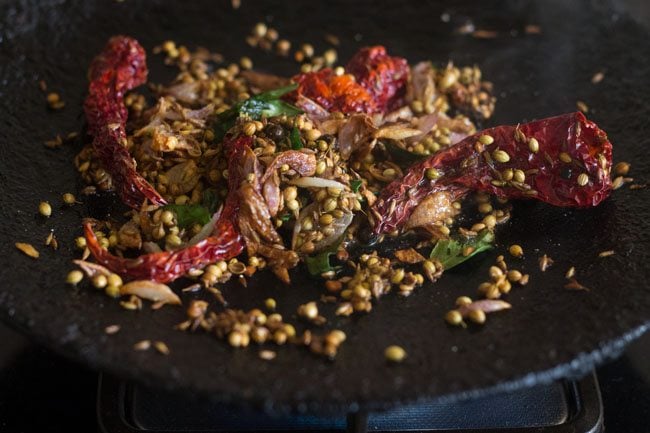
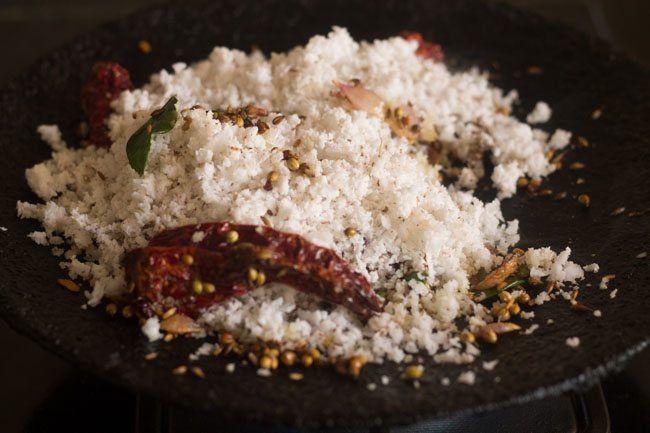
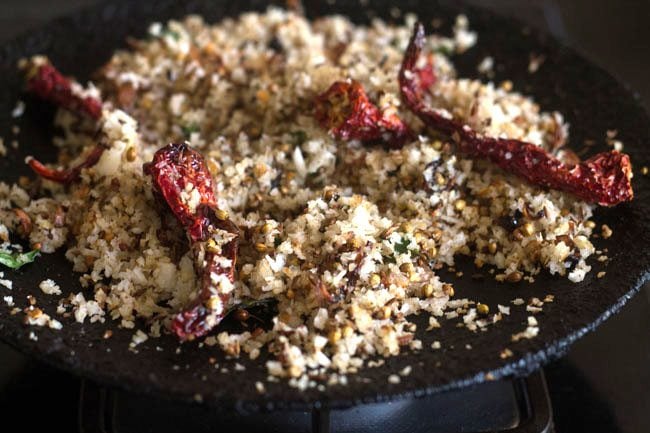
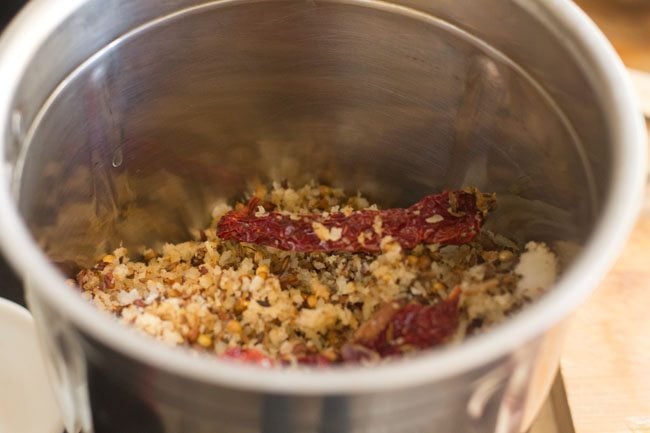
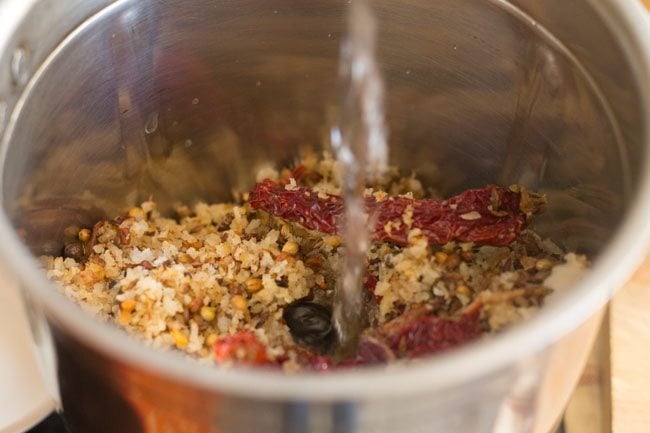
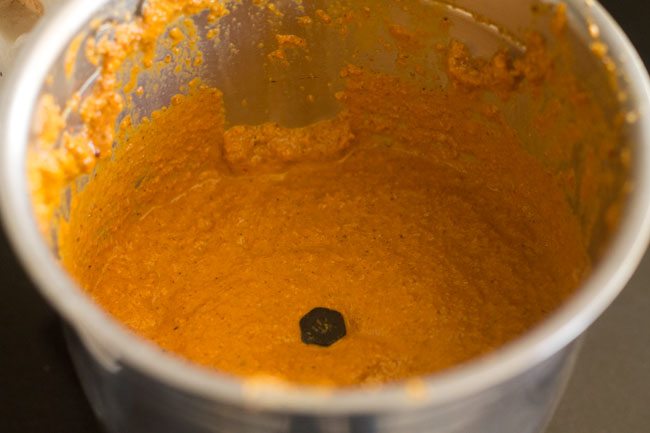
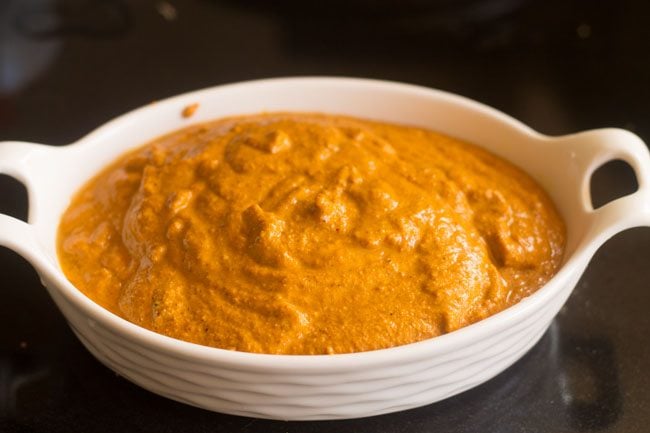
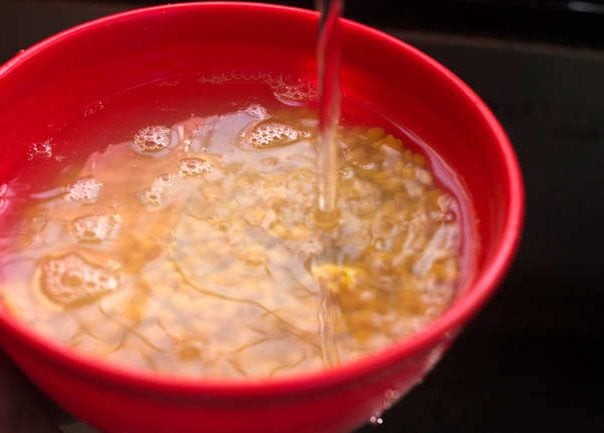
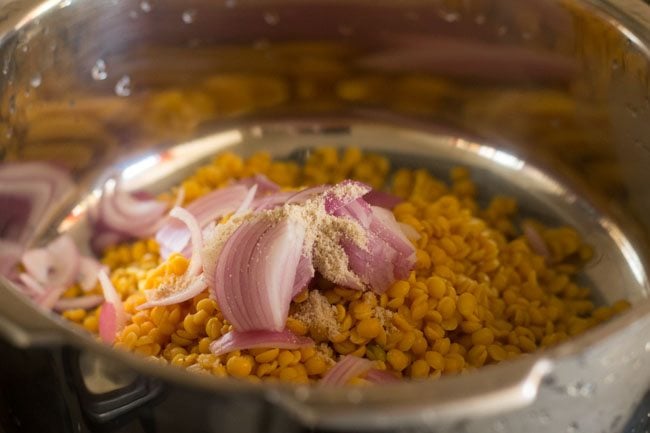
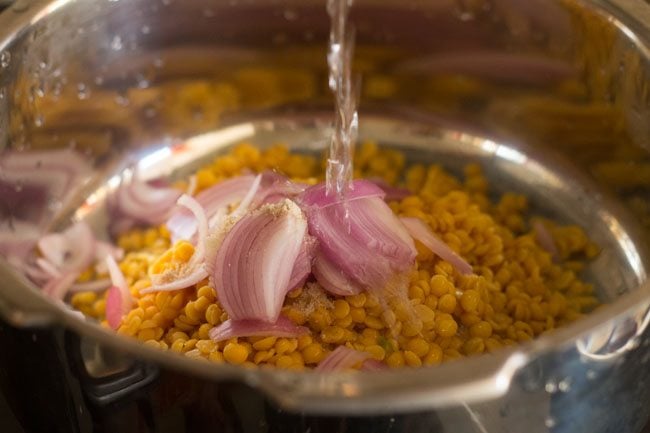
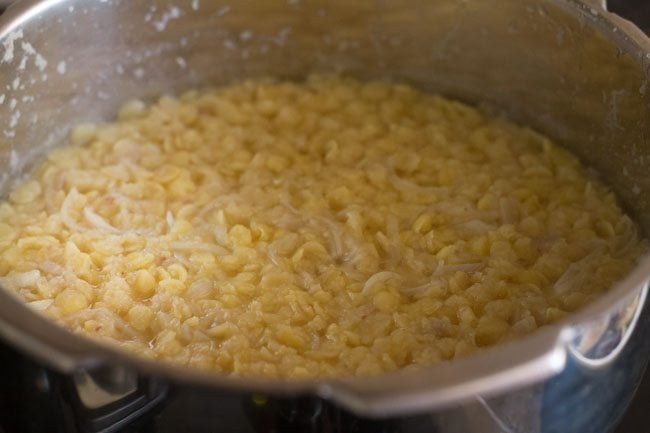
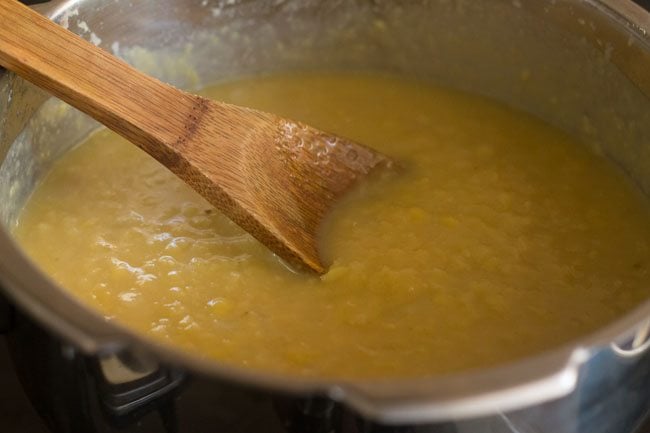
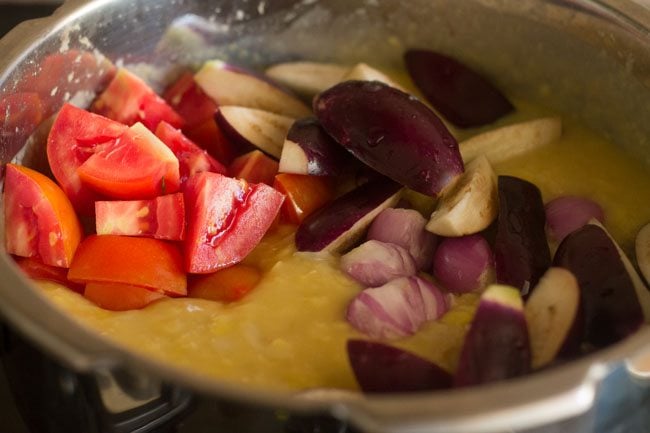
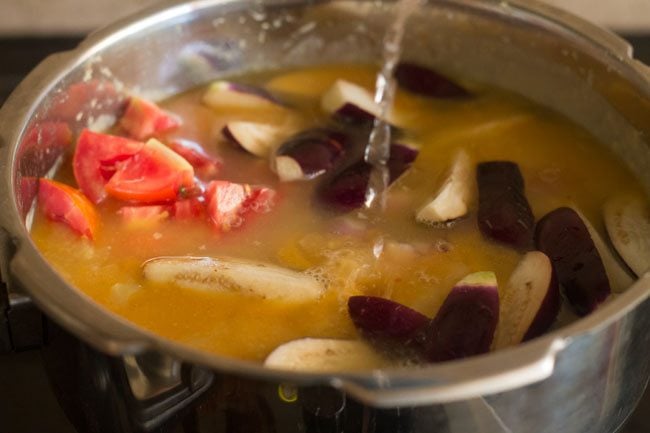
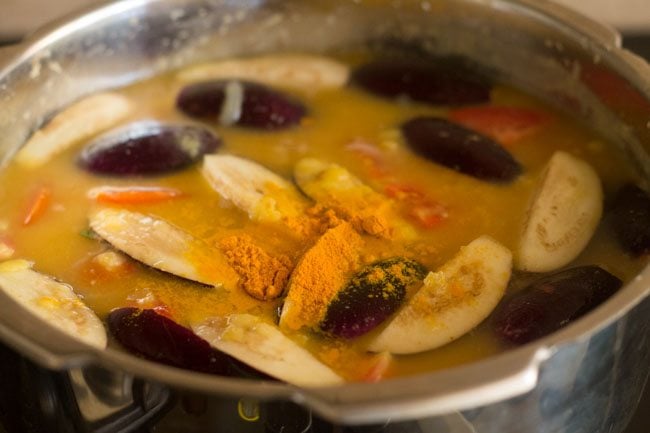
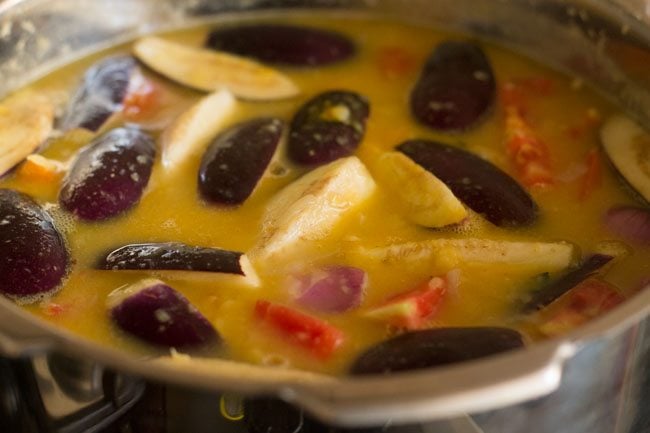
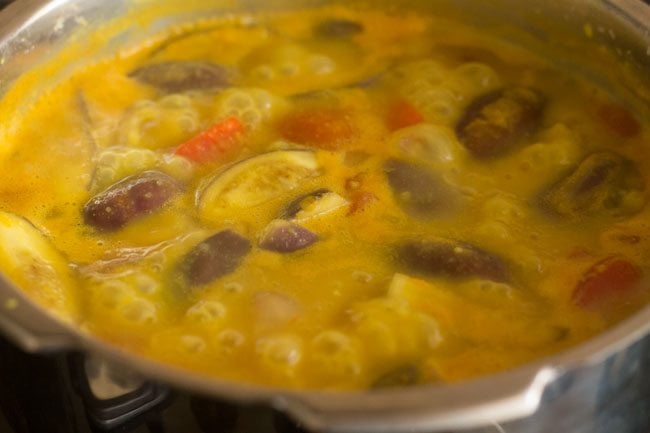
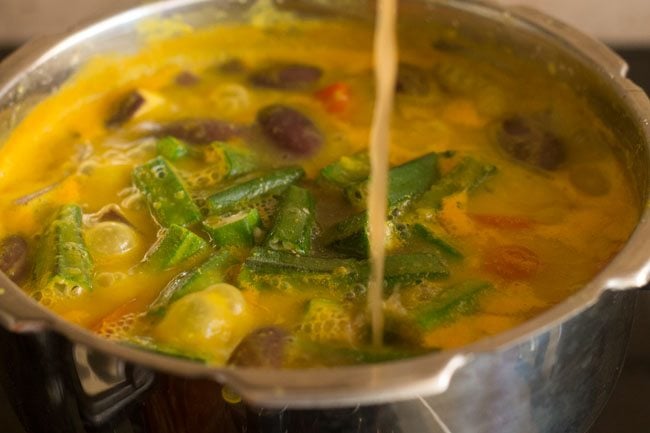
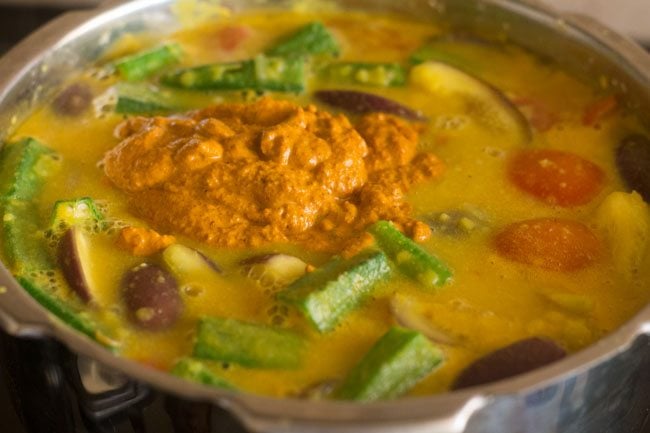
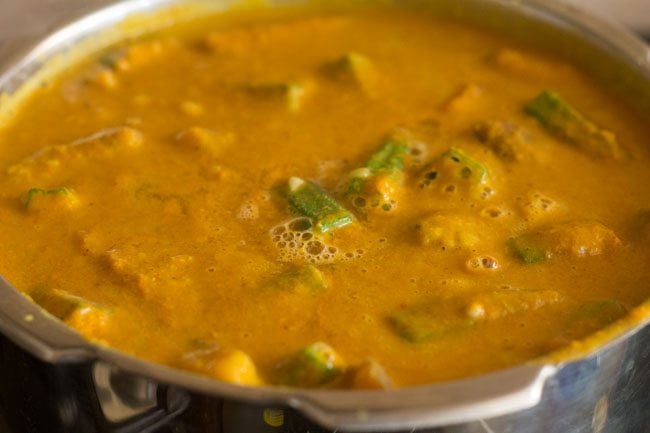
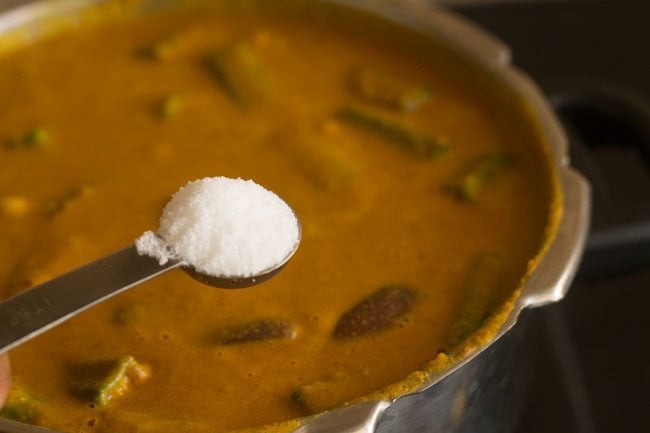
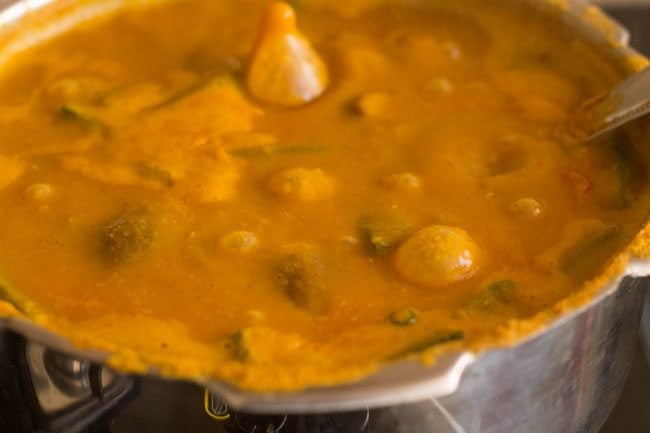
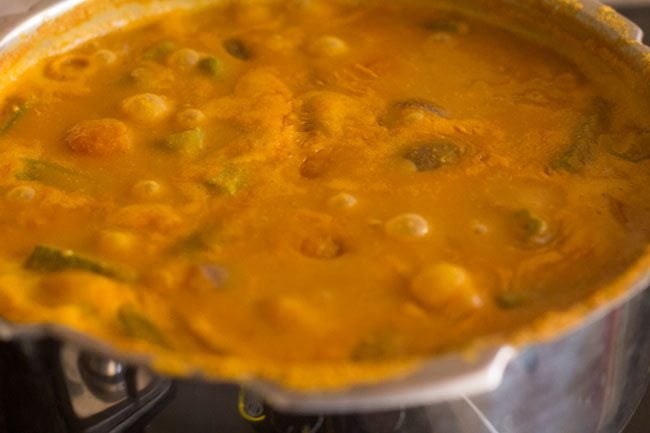
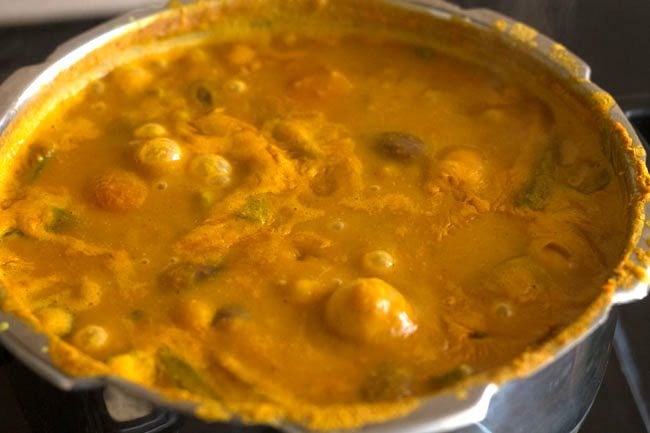
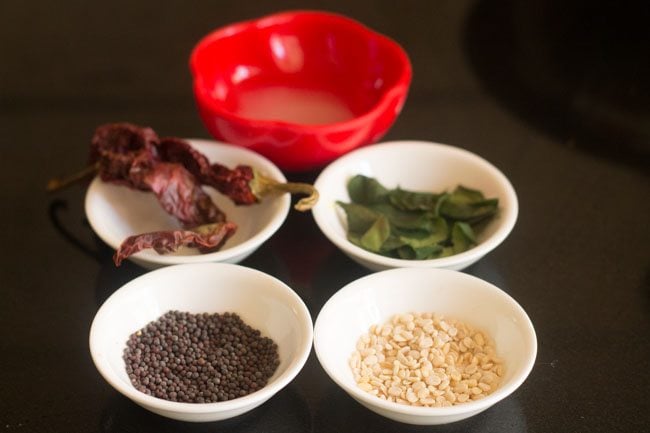
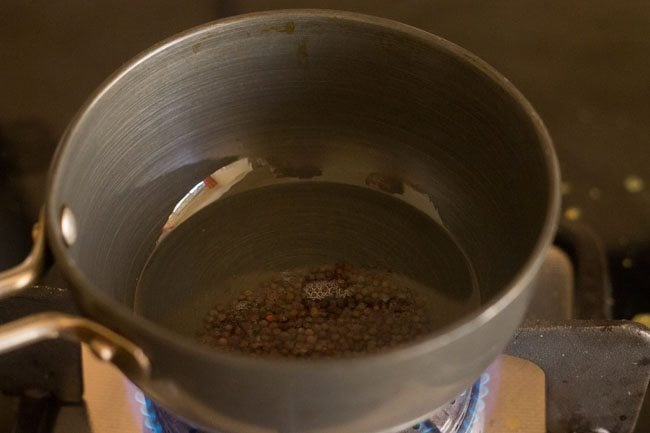
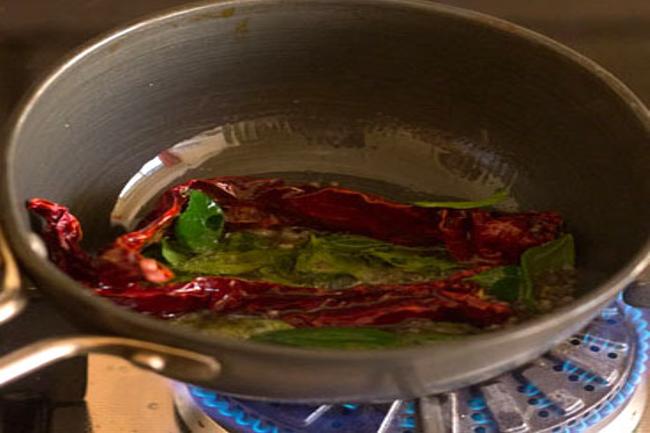
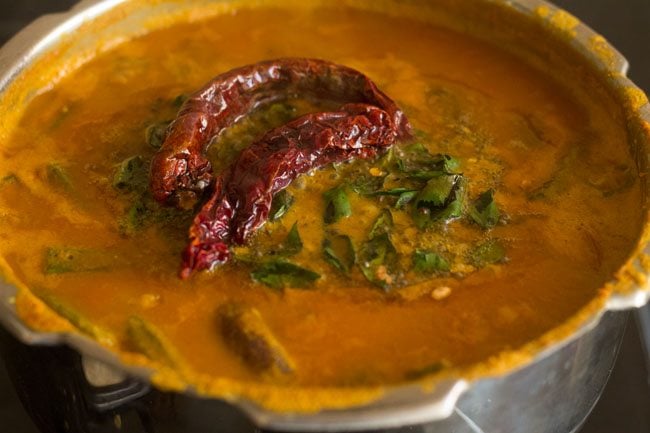
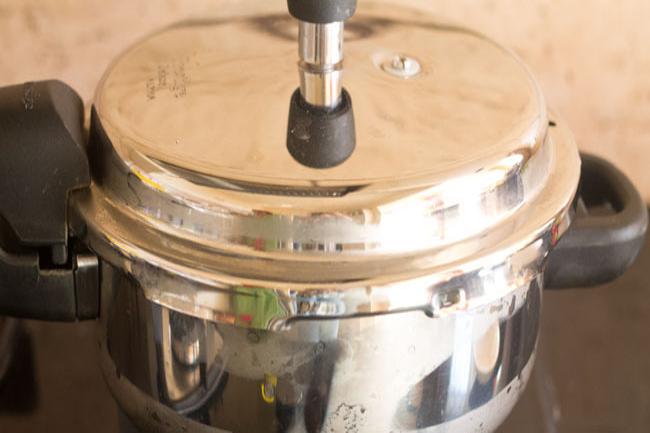
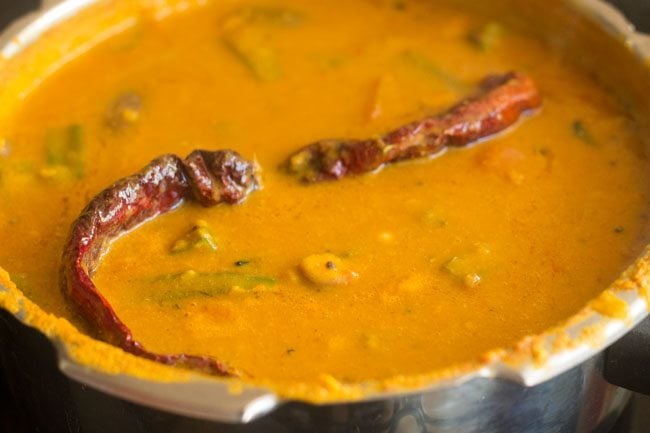
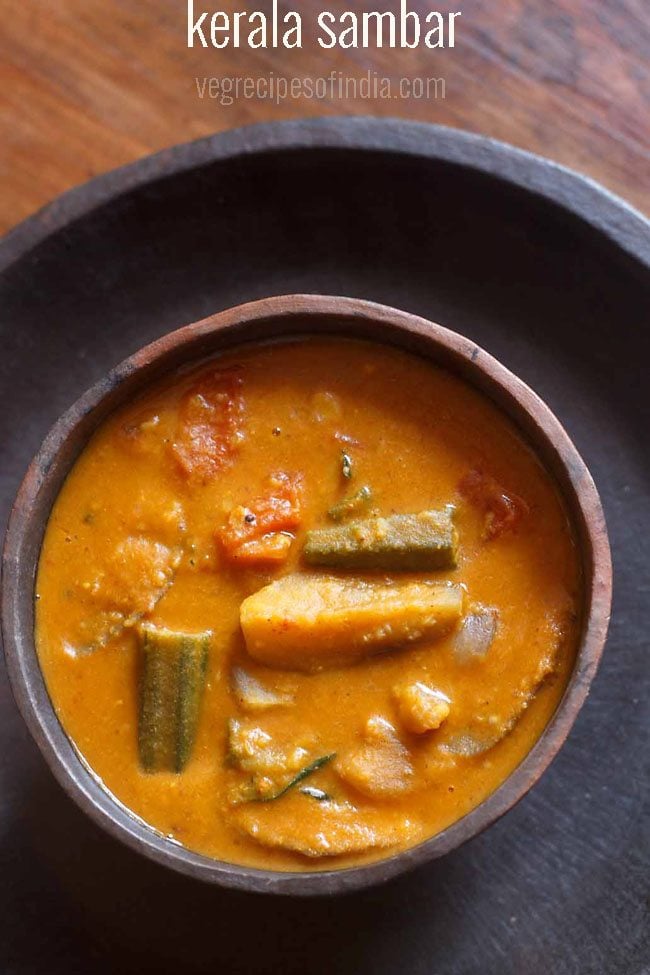
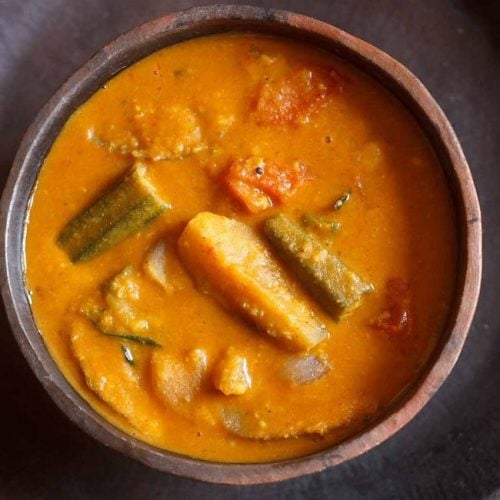
title: “Kerala Sambar " ShowToc: true date: “2024-09-25” author: “Daisy Andre”
About This Recipe
I have had sambar in many places and I also make many variants of sambar. But I like this Kerala sambar which my mom makes and this Varutharacha Sambar which is a different and unique recipe from this Kerala Sambar. I love the food from Kerala – from the Appam to the Avial, from the Puttu to the Kadala Curry. I have been lucky enough to have a feast of the Kerala cuisine many times, especially on the festival of Onam and Vishu. Thanks to my mother who is a great cook and my father who is born and brought up in Kerala. I remember my office days, when I would come from work and ask mom about the dinner. When she would mention that she had made sambar, I would feel so good. Those days, I would take more amount of rice than I usually took. I only need to have sambar with rice and Kerala pappadums. It is one comfort food for me that I have always relished and cherished.. It would be very selfish of me if I did not share this recipe of Kerala sambar with the readers of my blog. I hope you enjoy making this sambar and relishing it too. This Kerala style sambar, makes use of mixed vegetables. You could use any vegetables that are usually added in a sambar – like pumpkin (yellow or white), okra, carrots, drumsticks, radish, onions/shallots, tomatoes brinjals, snake gourd, mangalore cucumber, yam (suran), bottle gourd, plantain (unripe bananas), ivy gourd. I have used pearl onions, tomatoes aubergines and okra. Since I was also making Beans Thoran and Potato Fry, I did not add beans nor potatoes to the sambar. This recipe also calls for roasting the spices, coconut and then grinding it to make the sambar masala. Trust me, just making the fresh sambar masala is better than using ready-made sambar powder. I also use ready-made sambar powder, when I have to make a quick sambar dish. But in my experience, the sambar made with fresh, roasted ground spices taste very different than the one made with ready-made sambar powder. If you have to use readymade sambar powder, then make your own homemade Sambar Powder. It is much better than using the store-bought ones.
How to make Kerala Sambar
Make Kerala Sambar Masala
- Measure and keep all the ingredients ready for making sambar masala.
- On a skillet, tava or a shallow frying pan, heat up 1 to 1.5 tablespoons of coconut oil. Add 3 to 4 pearl onions (sambar onions) that have been sliced or chopped.
- Fry till they become translucent and are softened. Do not brown them.
- Keep the heat to a low. Then add 1 tablespoon cumin seeds and ¼ teaspoon fenugreek seeds.
- Next add 12 to 15 curry leaves and 2 tablespoons coriander seeds.
- Also add 3 to 4 dry Kashmiri red chilies (seeds removed) and ¼ teaspoon asafoetida (hing).
- Fry on a low heat stirring often till the spices are light brown.
- Now add about 1 cup of grated fresh coconut.
- First mix and then roast it with the rest of the spices till the coconut is golden and you get a fragrant aroma in your kitchen. Let this mixture cool. Remember to stir often so that the coconut is evenly roasted and browned.
- Once, cooled, add this roasted spices and coconut mixture into a grinder or blender.
- Add ½ cup water or as needed.
- Blend or grind to a smooth and fine consistency.
- This is how the sambar masala paste will look like.
Cook Dal
- Rinse ½ cup of tuvar dal (arhar dal, tur dal or pigeon pea lentils) 3 to 4 times in water.
- Take the rinsed tur dal in a 3 litre pressure cooker. Add 1 small-sized chopped onion (about ¼ cup chopped) and 1 to 2 pinches of asafoetida (hing).
- Add 1.5 to 2 cups water. Mix well. Pressure cook on medium heat for 4 to 5 whistles or till the lentils are tender, softened and thoroughly cooked. When the dal is cooking, make the tamarind pulp. To make tamarind pulp, soak 1 lime-sized tamarind (about 1 tablespoon tightly packed tamarind) in ¼ cup hot water for 20 to 30 minutes. When warm or cooled, squeeze the soaked tamarind with your fingers and add it to the soaked water. Then use the tamarind pulp in the sambar as mentioned in the steps below.
- When the pressure falls naturally in the cooker, then only open the lid. Check to see if the dal is softened really well. It should have a mushy consistency.
- Mash the cooked dal slightly with a spoon when done.
- Add 10 to 12 pearl onions (sambar onions), 5 to 7 chopped brinjals and 1 large-sized chopped tomato. Add all the vegetables except for the okra to the cooked tur dal.
- Add water as required to get a medium to medium-thin consistency.
- Next add ½ teaspoon turmeric powder.
- Give a nice stir to the entire mixture.
- Cook the dal with the vegetables until they are half-cooked. This takes about 11 to 12 minutes. Stir at intervals so that the lentils do not get stuck to the pan. If you like you can cook the vegetables separately in water and then combine with the mashed dal or steam the vegetables separately in a steamer-pan or pressure cooker.
- Now add 8 to 10 okra that have been chopped and ¼ cup tamarind pulp.
- Add the ground masala paste.
- Mix and stir well. add some more water if the sambar has become thick.
- Add salt as required.
- Give the sambar a boil once and then simmer till the veggies are tender and cooked.
- This will approximately take about 15 to 16 minutes. Turn off the heat when all the ingredients in the sambar have nicely infused with one another and you have a lovely sambar aroma pervading all around in your kitchen.
- Keep the sambar closed with a lid and move on to the next step of tempering the sambar.
- Measure and keep all the ingredients ready for the tempering/tadka.
- In a pan or the tadka utensil, heat 2 tablespoons coconut oil. Add 1 teaspoon mustard seeds and let them pop or crackle. Keep heat to low or medium-low.
- Then add 1 teaspoon urad dal, 2 to 3 dry red chilies and 1 sprig curry leaves (about 12 to 15 curry leaves). Fry the red chilies till they change color. Take care that the red chilies do not get burnt.
- Once the tadka is ready, directly pour the hot tadka on the hot sambar.
- Immediately, cover the Kerala sambar with a lid and let it stay closed for around 8 to 10 minutes. We do this at home so that the flavors and aroma of the tadka get very well infused with the sambar or dal.
- Later mix well.
- Serve the Kerala sambar with steamed rice and pappadums, accompanied by a side vegetable dish and a bowl of yogurt or raita. Enjoy 🙂 If there is any leftover sambar, you could have it the next day with dosa, idli, medu vada or dal vada. But keep the leftover sambar in the fridge.
Expert Tips
Do not directly add the aubergines (brinjal) in sambar. Chop them and keep them in salted water for 10 to 15 mins so that the bitter juices are extracted from them in the salted water.The souring agent we use in sambar is generally tamarind. If your tamarind is too sour, then you will have to increase the chillies and salt with it and vice versa. The tamarind, chillies and salt have to balance each other. I came across this tip in Chandra Padmanabhan’s cook book – “Southern Spice: Delicious Vegetarian Recipes from South India“. It is a nice book if you are looking for a variety of vegetarian recipes amongst the South Indian cuisine. Fortunately, whenever I have made sambar, the tamarind has never been too tart and the sambar has never become too sour.If you do not have fresh coconut, you could substitute it with desiccated coconut.If you are using a lot of mixed vegetables, alter their amount (that is do not use the quantity of vegetables mentioned in this post) so that there is a balance of the vegetables and dal in the sambar.
More Sambar Varieties
Idli sambarThakkali sambarVegetable sambarDrumstick sambar
Please be sure to rate the recipe in the recipe card or leave a comment below if you have made it. For more vegetarian inspirations, Sign Up for my emails or follow me on Instagram, Youtube, Facebook, Pinterest or Twitter. This Kerala Sambar recipe post from the archives first published in September 2010 has been republished and updated on 26 June 2022.







































